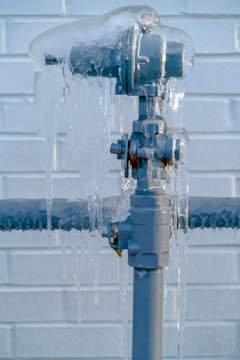Protecting Against Frozen Pipes in Cold Weather: Key Tips
Protecting Against Frozen Pipes in Cold Weather: Key Tips
Blog Article
We've encountered this post involving Winter Plumbing Precautions: Preventing Frozen Pipes directly below on the internet and accepted it made perfect sense to discuss it with you over here.

Cold weather can wreak havoc on your plumbing, particularly by freezing pipelines. Below's how to prevent it from happening and what to do if it does.
Intro
As temperature levels decrease, the risk of frozen pipes rises, possibly resulting in costly repairs and water damages. Understanding exactly how to prevent frozen pipelines is crucial for property owners in cool environments.
Comprehending Icy Pipelines
What triggers pipelines to freeze?
Pipes ice up when subjected to temperature levels below 32 ° F (0 ° C) for expanded durations. As water inside the pipes freezes, it expands, putting pressure on the pipe walls and potentially creating them to break.
Threats and problems
Frozen pipelines can lead to water system interruptions, building damage, and pricey repair services. Burst pipelines can flooding homes and cause considerable structural damage.
Indicators of Frozen Piping
Identifying icy pipes early can prevent them from breaking.
Exactly how to identify icy pipelines
Search for decreased water circulation from taps, unusual smells or noises from pipelines, and visible frost on subjected pipes.
Prevention Tips
Insulating vulnerable pipes
Wrap pipelines in insulation sleeves or use heat tape to secure them from freezing temperatures. Focus on pipelines in unheated or outside locations of the home.
Heating techniques
Keep indoor spaces properly warmed, especially areas with pipes. Open cupboard doors to permit warm air to distribute around pipes under sinks.
Shielding Exterior Pipes
Garden pipes and exterior taps
Detach and drain pipes yard tubes prior to winter months. Install frost-proof faucets or cover outdoor taps with protected caps.
What to Do If Your Pipelines Freeze
Immediate activities to take
If you believe frozen pipelines, keep taps open to eliminate stress as the ice thaws. Make use of a hairdryer or towels taken in warm water to thaw pipelines gradually.
Long-Term Solutions
Architectural modifications
Think about rerouting pipes far from outside walls or unheated locations. Add extra insulation to attic rooms, basements, and crawl spaces.
Updating insulation
Buy top notch insulation for pipelines, attics, and walls. Correct insulation assists preserve constant temperature levels and lowers the danger of frozen pipes.
Verdict
Protecting against icy pipes calls for aggressive measures and quick reactions. By comprehending the reasons, signs, and preventive measures, house owners can safeguard their pipes during cold weather.
5 Ways to Prevent Frozen Pipes
Drain Outdoor Faucets and Disconnect Hoses
First, close the shut-off valve that controls the flow of water in the pipe to your outdoor faucet. Then, head outside to disconnect and drain your hose and open the outdoor faucet to allow the water to completely drain out of the line. Turn off the faucet when done. Finally, head back to the shut-off valve and drain the remaining water inside the pipe into a bucket or container. Additionally, if you have a home irrigation system, you should consider hiring an expert to clear the system of water each year.
Insulate Pipes
One of the best and most cost-effective methods for preventing frozen water pipes is to wrap your pipes with insulation. This is especially important for areas in your home that aren’t exposed to heat, such as an attic. We suggest using foam sleeves, which can typically be found at your local hardware store.
Keep Heat Running at 65
Your pipes are located inside your walls, and the temperature there is much colder than the rest of the house. To prevent your pipes from freezing, The Insurance Information Institute suggests that you keep your home heated to at least 65 degrees, even when traveling. You may want to invest in smart devices that can keep an eye on the temperature in your home while you’re away.
Leave Water Dripping
Moving water — even a small trickle — can prevent ice from forming inside your pipes. When freezing temps are imminent, start a drip of water from all faucets that serve exposed pipes. Leaving a few faucets running will also help relieve pressure inside the pipes and help prevent a rupture if the water inside freezes.
Open Cupboard Doors
Warm your kitchen and bathroom pipes by opening cupboards and vanities. You should also leave your interior doors ajar to help warm air circulate evenly throughout your home.

I came across that content on 6 Ways to Prevent Frozen Pipes when doing a lookup on the search engines. Don't hesitate to set aside a second to distribute this blog posting if you enjoyed it. I appreciate your readership.
Click Here Report this page